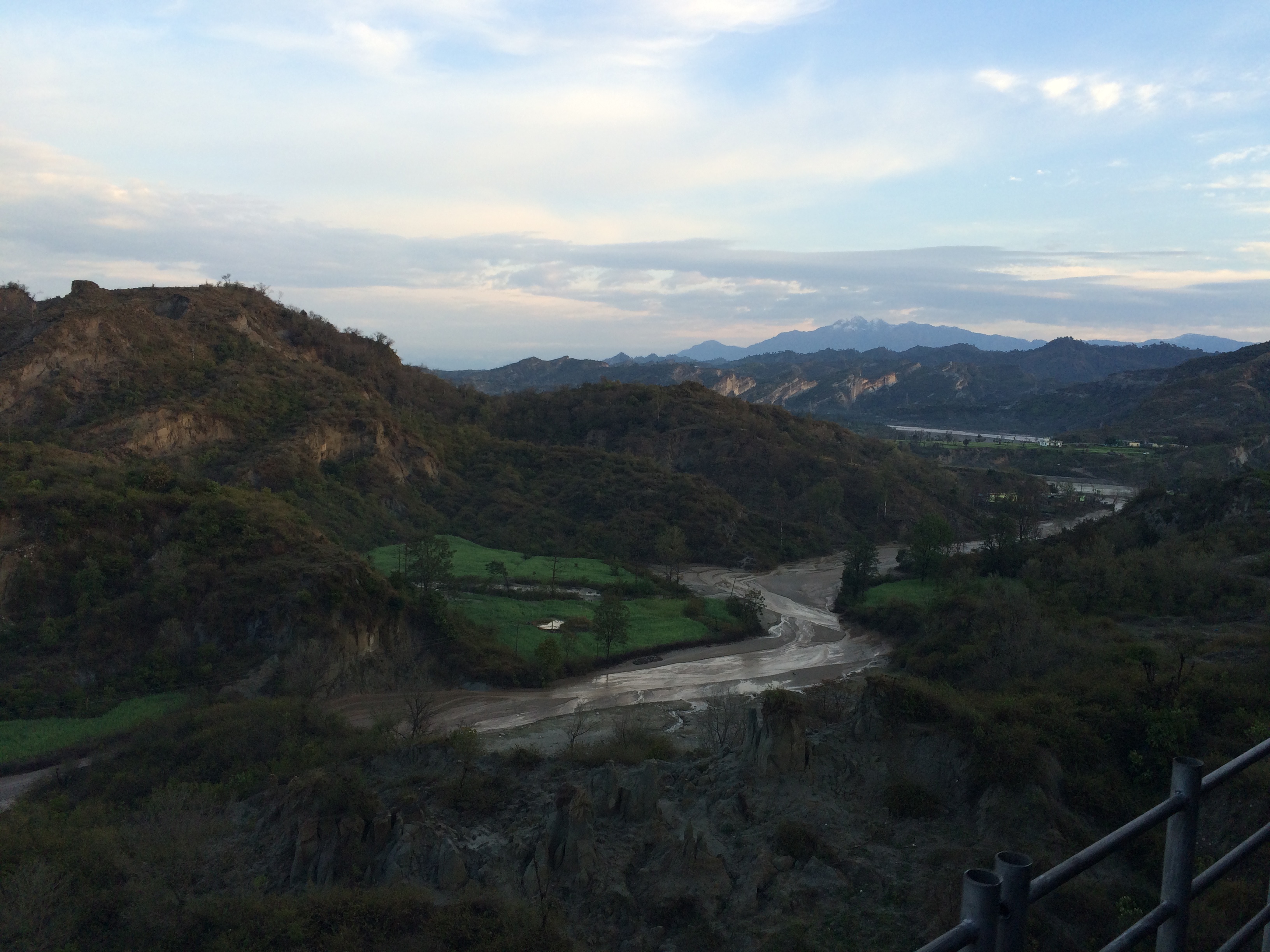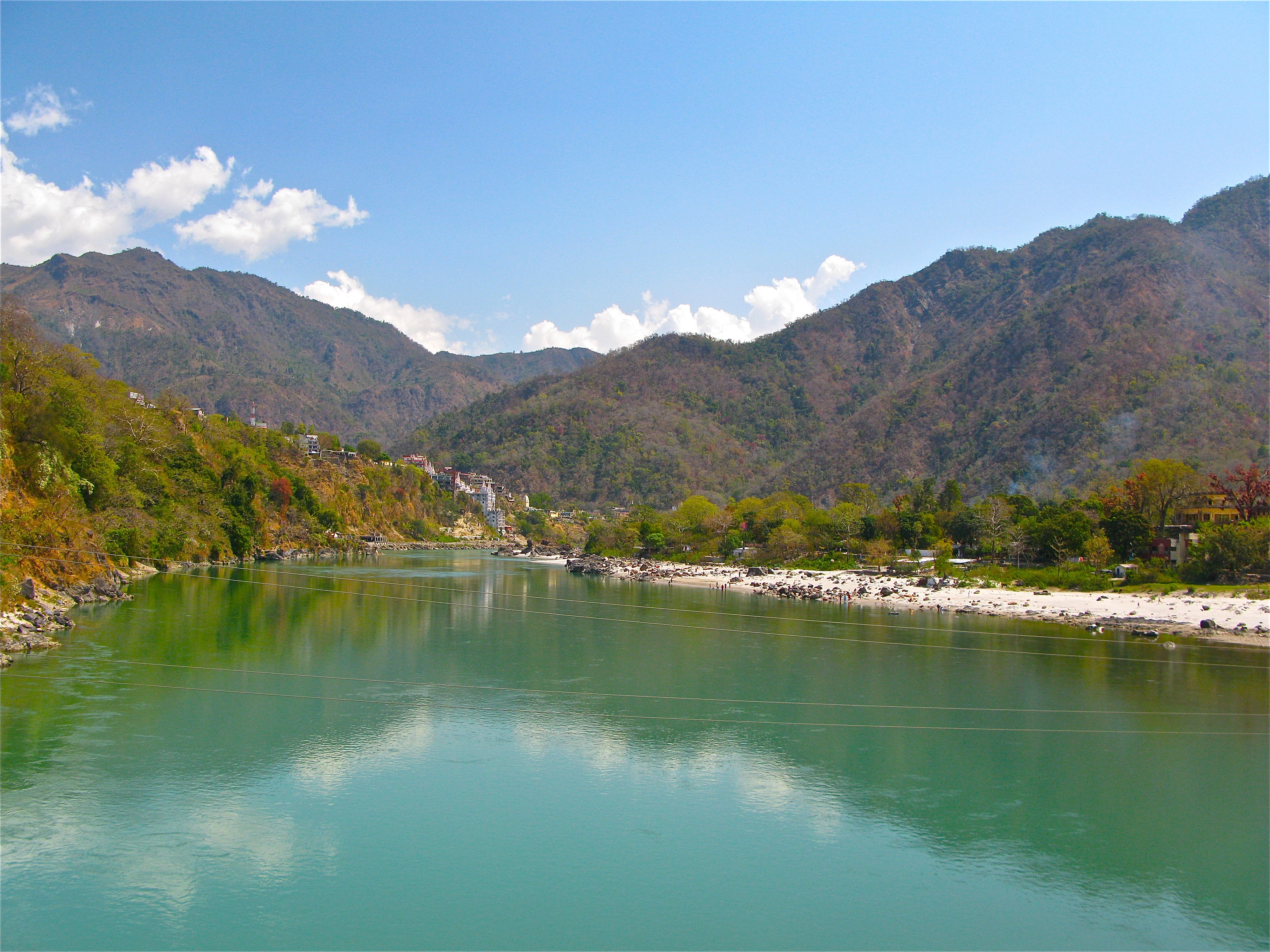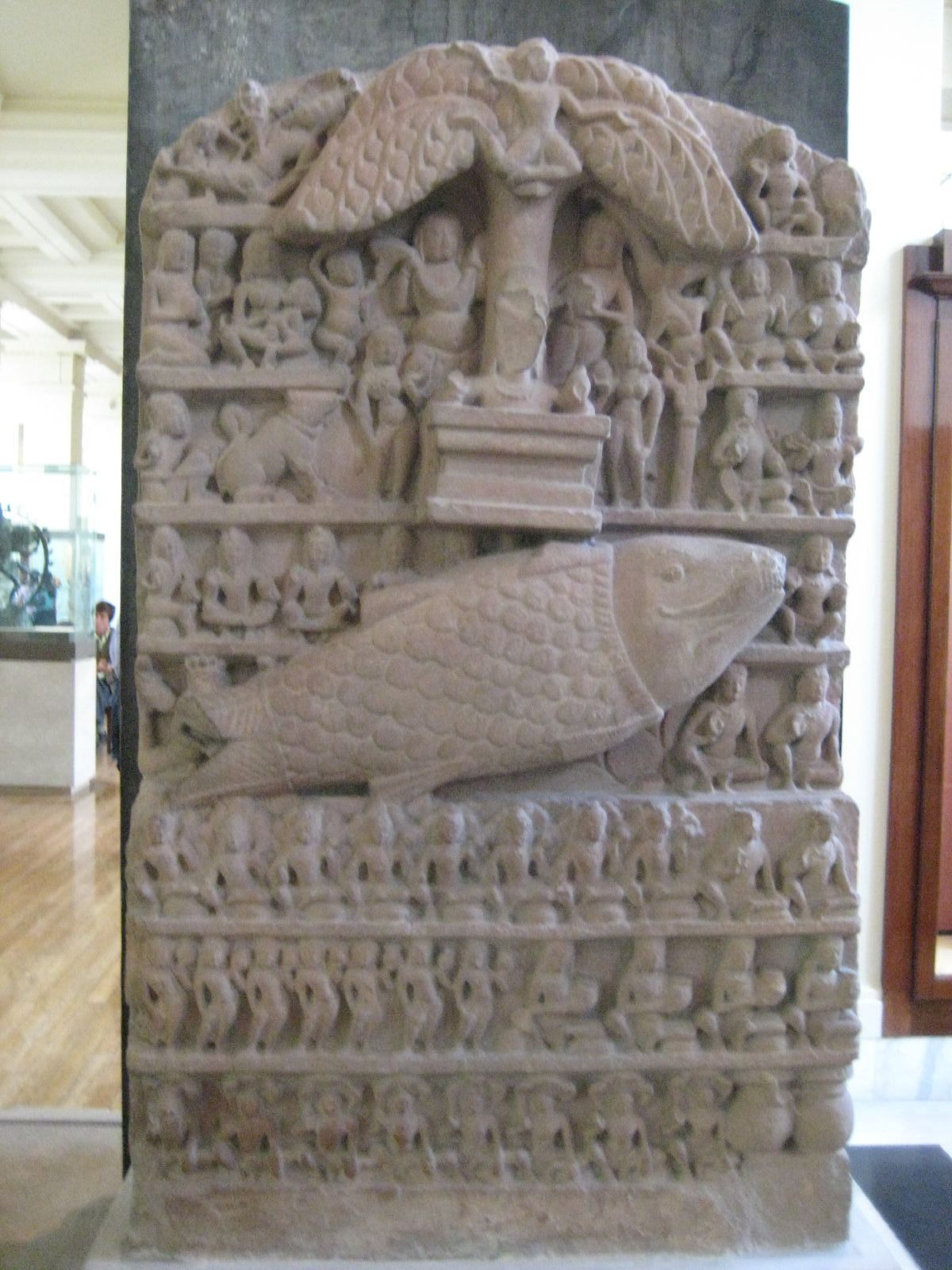|
Amar Mahal Palace
The Amar Mahal Palace is a palace in Jammu, in the Indian erstwhile Kingdom of Jammu and Kashmir, India. The palace has now been converted into a museum. Commissioned by Maharaja Amar Singh, a Dogra king, the palace was built in the nineteenth century by a French architect on the lines of a French Chateau. The palace was donated to the Hari-Tara Charitable Trust by Karan Singh for use as a museum. It has many exhibits including a golden throne weighing 120kg, a Pahari miniature, Kangra miniature paintings, a library of 25,000 antique books, many rare art collections, and a large collection of portraits of the royal family. The palace was the last official residence of the Dogra dynasty and the last king of the kingdom Maharaja Hari Singh. Geography Amar Mahal is situated on the right bank of the Tawi River, on a bend of the river, in Jammu. Tawi river is also known as Suryaputri Tawi (Suryaputri is a Hindi word meaning 'The Daughter of The Sun God').Jammu, once a princely c ... [...More Info...] [...Related Items...] OR: [Wikipedia] [Google] [Baidu] |
Jammu
Jammu is the winter capital of the Indian union territory of Jammu and Kashmir (union territory), Jammu and Kashmir. It is the headquarters and the largest city in Jammu district of the union territory. Lying on the banks of the river Tawi River, Tawi, the city of Jammu, with an area of , is surrounded by the Himalayas in the north and the Indo-Gangetic Plain, northern-plains in the south. Jammu is the second most populous city of the union territory. Three battles have been fought in the city: first by the founder Raja Mal Dev against Timur in Battle of Jammu (1399), second by Sardar Bhag Singh against Mughal army in Battle of Jammu (1712) and the third by Mian Dido & Maharaja Gulab Singh against Ranjit Singh's army in Battle of Jammu (1808). Known as the ''City of Temples'' for its ancient temples and Hindu shrines, Jammu is the most visited place in the union territory. Jammu city shares its borders with the neighbouring Samba district. Etymology According to local tradit ... [...More Info...] [...Related Items...] OR: [Wikipedia] [Google] [Baidu] |
Sivalik Hills
The Sivalik Hills, also known as the Shivalik Hills and Churia Hills, are a mountain range of the outer Himalayas that stretches over about from the Indus River eastwards close to the Brahmaputra River, spanning the northern parts of the Indian subcontinent. It is wide with an average elevation of . Between the Teesta and Raidāk Rivers in Assam is a gap of about . "Sivalik" literally means 'tresses of Shiva'. Sivalik region is home to the Soanian archaeological culture. Geology Geologically, the Sivalik Hills belong to the Tertiary deposits of the outer Himalayas. They are chiefly composed of sandstone and conglomerate rock formations, which are the solidified detritus of the Himalayas to their north; they are poorly consolidated. The remnant magnetisation of siltstones and sandstones indicates that they were deposited 16–5.2 million years ago. In Nepal, the Karnali River exposes the oldest part of the Shivalik Hills. They are bounded on the south by a fault syst ... [...More Info...] [...Related Items...] OR: [Wikipedia] [Google] [Baidu] |
Kalki
Kalki ( sa, कल्कि), also called Kalkin or Karki, is the prophesied tenth and final incarnation of the Hindu god Vishnu. He is described to appear in order to end the Kali Yuga, one of the four periods in the endless cycle of existence (''Krita'') in Vaishnava cosmology. The end of the Kali Yuga states this will usher in the new epoch of Satya Yuga in the cycle of existence, until the Mahapralaya (dissolution of the universe). Kalki is described in the Puranas as the avatar who rejuvenates existence by ending the darkest and destructive period to remove adharma (unrighteousness) and ushering in the Satya Yuga, while riding a white horse with a fiery sword. The description and details of Kalki are different among various Puranas. Kalki is also found in Buddhist texts, for example the ''Kalachakra-Tantra'' of Tibetan Buddhism. The prophecy of the Kalki avatara is also told in Sikh texts. Etymology The name Kalki is derived from ''Kal'', which means "time" (Kali Y ... [...More Info...] [...Related Items...] OR: [Wikipedia] [Google] [Baidu] |
Rama
Rama (; ), Ram, Raman or Ramar, also known as Ramachandra (; , ), is a major deity in Hinduism. He is the seventh and one of the most popular '' avatars'' of Vishnu. In Rama-centric traditions of Hinduism, he is considered the Supreme Being. Rama is said to have been born to Kaushalya and Dasharatha in Ayodhya, the ruler of the Kingdom of Kosala. His siblings included Lakshmana, Bharata, and Shatrughna. He married Sita. Though born in a royal family, their life is described in the Hindu texts as one challenged by unexpected changes such as an exile into impoverished and difficult circumstances, ethical questions and moral dilemmas. Of all their travails, the most notable is the kidnapping of Sita by demon-king Ravana, followed by the determined and epic efforts of Rama and Lakshmana to gain her freedom and destroy the evil Ravana against great odds. The entire life story of Rama, Sita and their companions allegorically discusses duties, rights and social responsibil ... [...More Info...] [...Related Items...] OR: [Wikipedia] [Google] [Baidu] |
Matsya
Matsya ( sa, मत्स्य, lit. ''fish'') is the fish avatar of the Hindu god Vishnu. Often described as the first of Vishnu's ten primary avatars, Matsya is described to have rescued the first man, Manu, from a great deluge. Matsya may be depicted as a giant fish, often golden in color, or anthropomorphically with the torso of Vishnu connected to the rear half of a fish. The earliest account of Matsya is found in the ''Shatapatha Brahmana,'' where Matsya is not associated with any particular deity. The fish-saviour later merges with the identity of Brahma in post-Vedic era, and still later, becomes regarded with Vishnu. The legends associated with Matsya expand, evolve, and vary in Hindu texts. These legends have embedded symbolism, where a small fish with Manu's protection grows to become a big fish, and the fish saves the man who would be the progenitor of the next race of mankind. In later versions, Matsya slays a demon named Hayagriva (son of sage Kashyapa and Dit ... [...More Info...] [...Related Items...] OR: [Wikipedia] [Google] [Baidu] |
Greek Architecture
Ancient Greek architecture came from the Greek-speaking people (''Hellenic'' people) whose culture flourished on the Greek mainland, the Peloponnese, the Aegean Islands, and in colonies in Anatolia and Italy for a period from about 900 BC until the 1st century AD, with the earliest remaining architectural works dating from around 600 BC. Ancient Greek architecture is best known from its temples, many of which are found throughout the region, with the Parthenon regarded, now as in ancient times, as the prime example. Most remains are very incomplete ruins, but a number survive substantially intact, mostly outside modern Greece. The second important type of building that survives all over the Hellenic world is the open-air theatre, with the earliest dating from around 525–480 BC. Other architectural forms that are still in evidence are the processional gateway (''propylon''), the public square (''agora'') surrounded by storied colonnade (''stoa''), the town council building ( ... [...More Info...] [...Related Items...] OR: [Wikipedia] [Google] [Baidu] |
European Castle
A castle is a type of fortified structure built during the Middle Ages predominantly by the nobility or royalty and by military orders. Scholars debate the scope of the word ''castle'', but usually consider it to be the private fortified residence of a lord or noble. This is distinct from a palace, which is not fortified; from a fortress, which was not always a residence for royalty or nobility; from a ''pleasance'' which was a walled-in residence for nobility, but not adequately fortified; and from a fortified settlement, which was a public defence – though there are many similarities among these types of construction. Use of the term has varied over time and has also been applied to structures such as hill forts and 19th-20th century homes built to resemble castles. Over the approximately 900 years when genuine castles were built, they took on a great many forms with many different features, although some, such as curtain walls, arrowslits, and portcullises, were ... [...More Info...] [...Related Items...] OR: [Wikipedia] [Google] [Baidu] |
Sandstone
Sandstone is a clastic sedimentary rock composed mainly of sand-sized (0.0625 to 2 mm) silicate grains. Sandstones comprise about 20–25% of all sedimentary rocks. Most sandstone is composed of quartz or feldspar (both silicates) because they are the most resistant minerals to weathering processes at the Earth's surface. Like uncemented sand, sandstone may be any color due to impurities within the minerals, but the most common colors are tan, brown, yellow, red, grey, pink, white, and black. Since sandstone beds often form highly visible cliffs and other topographic features, certain colors of sandstone have been strongly identified with certain regions. Rock formations that are primarily composed of sandstone usually allow the percolation of water and other fluids and are porous enough to store large quantities, making them valuable aquifers and petroleum reservoirs. Quartz-bearing sandstone can be changed into quartzite through metamorphism, usually related to ... [...More Info...] [...Related Items...] OR: [Wikipedia] [Google] [Baidu] |
Prime Minister Of India
The prime minister of India (IAST: ) is the head of government of the Republic of India. Executive authority is vested in the prime minister and their chosen Council of Ministers, despite the president of India being the nominal head of the executive. The prime minister is often the leader of the party or the coalition with a majority in the lower house of the Parliament of India, the Lok Sabha, which is the main legislative body in the Republic of India. The prime minister and their cabinet are at all times responsible to the Lok Sabha. The prime minister is appointed by the president of India; however the prime minister has to enjoy the confidence of the majority of Lok Sabha members, who are directly elected every five years, lest the prime minister shall resign. The prime minister can be a member of the Lok Sabha or of the Rajya Sabha, the upper house of the parliament. The prime minister controls the selection and dismissal of members of the Union Council of Ministers ... [...More Info...] [...Related Items...] OR: [Wikipedia] [Google] [Baidu] |
Indira Gandhi
Indira Priyadarshini Gandhi (; Given name, ''née'' Nehru; 19 November 1917 – 31 October 1984) was an Indian politician and a central figure of the Indian National Congress. She was elected as third prime minister of India in 1966 and was also the first and, to date, only female prime minister of India. Gandhi was the daughter of Jawaharlal Nehru, the first prime minister of India. She served as prime minister from January 1966 to March 1977 and again from January 1980 until Assassination of Indira Gandhi, her assassination in October 1984, making her the second longest-serving Indian prime minister after her father. During Nehru's premiership from 1947 to 1964, Gandhi was considered a key assistant and accompanied him on his numerous foreign trips. She was elected president of the Indian National Congress in 1959. Upon her father's death in 1964, she was appointed as a member of the Rajya Sabha (upper house) and became a member of Lal Bahadur Shastri ministry, Lal ... [...More Info...] [...Related Items...] OR: [Wikipedia] [Google] [Baidu] |
Princely States
A princely state (also called native state or Indian state) was a nominally sovereign entity of the British Indian Empire that was not directly governed by the British, but rather by an Indian ruler under a form of indirect rule, subject to a subsidiary alliance and the suzerainty or paramountcy of the British crown. There were officially 565 princely states when India and Pakistan became independent in 1947, but the great majority had contracted with the viceroy to provide public services and tax collection. Only 21 had actual state governments, and only four were large (Hyderabad State, Mysore State, Jammu and Kashmir State, and Baroda State). They acceded to one of the two new independent nations between 1947 and 1949. All the princes were eventually pensioned off. At the time of the British withdrawal, 565 princely states were officially recognised in the Indian subcontinent, apart from thousands of zamindari estates and jagirs. In 1947, princely states covered 40% ... [...More Info...] [...Related Items...] OR: [Wikipedia] [Google] [Baidu] |
Government Of India
The Government of India (ISO: ; often abbreviated as GoI), known as the Union Government or Central Government but often simply as the Centre, is the national government of the Republic of India, a federal democracy located in South Asia, consisting of 28 union states and eight union territories. Under the Constitution, there are three primary branches of government: the legislative, the executive and the judiciary, whose powers are vested in a bicameral Parliament, President, aided by the Council of Ministers, and the Supreme Court respectively. Through judicial evolution, the Parliament has lost its sovereignty as its amendments to the Constitution are subject to judicial intervention. Judicial appointments in India are unique in that the executive or legislature have negligible say. Etymology and history The Government of India Act 1833, passed by the British parliament, is the first such act of law with the epithet "Government of India". Basic structure The gover ... [...More Info...] [...Related Items...] OR: [Wikipedia] [Google] [Baidu] |






Saunders_Quarry-1.jpg)



